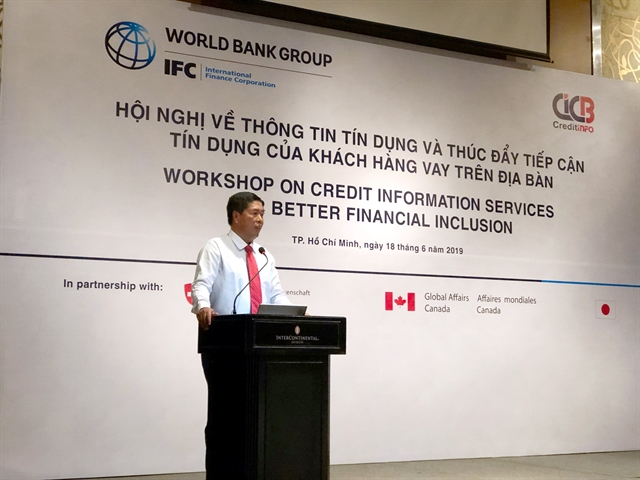

|
| Nguyễn Quốc Hùng, director of the SBV’s Credit Department |
The State Bank of Việt Nam (SBV) has recently made public a draft circular on safety limits for banks and called for public comment on the proposed changes. The circular would tighten regulations on lending, especially in the high-end real estate segment.
Nguyễn Quốc Hùng, director of the SBV’s Credit Department, talked with the media about the issue during a meeting last week
Some are concerned about the draft that will replace Circular 36/2014/TT-NHNN, saying it could have adverse impacts on the real estate market. What do you think?
The draft circular amends a number of regulations related the capital safety ratio in the operation of domestic and foreign banks in Việt Nam. The revision includes a reduction of the ratio of short-term capital for medium- and long-term loans. Under the three-phase roadmap lasting until 2022, the maximum ratio of short-term funds used for medium- and long-term loans will be reduced to 30 per cent by July 1, 2020.
The regulation will be applied to loans in all sectors of the economy, not only the real estate sector.
The change will help the SBV control liquidity risks to ensure the safety of the banking industry in the face of economic changes, contributing to the country’s sustainable development.
The draft circular also sets the risk weight ratio for home purchasing loans worth VNĐ3 billion and above at 150 per cent and the rate for loans worth VNĐ1.5-3 billion at 100 per cent. [The current ratio for both loans is 50 per cent.]
For loans worth less than VNĐ1.5 billion and loans to buy property in social and Government-supported housing projects, the rate is set at 50 per cent.
The regulation is designed to direct real estate credit to people with real housing needs [avoiding speculators] and promote the development of low-cost commercial and social housing as demand in this segment exceeds supply. Therefore, the draft circular would not negatively affect the real estate market.
The adjustment is in line with the Government's policy of fine-tuning legal regulations and mechanisms related the real estate market to ensure the market’s effective and sustainable development as well as the safety of the banking system.
The change is also expected to encourage real estate enterprises to improve their capacity and reputation, which will enable them to raise capital from both domestic and global markets. It will help reduce their dependence on bank loans, which is in line with current international trends.
If the proposed regulations will not have a negative effect, why was the market stagnant in the first months of this year, with declines reported in both supply source and transactions?
The real estate market operates based on the law of supply and demand, and a difference between supply and demand can create stagnation. Many investors focus on high-end or tourist apartments but the demand of the majority of local customers is affordable housing which is in short supply.
In addition, it is normal to see fewer real estate transactions made in the first months of the year after the Lunar New Year due to the habits of local consumers.
Many cities and provinces across the country have strengthened inspections, supervisions and the review process for the approval of real estate projects. Adjustments to the plans of some projects have also caused construction to lag behind schedule.
Recently, there have been many disputes and complaints about the management of residential buildings due to the failure of property developers to meet their commitments. This has led to reduced trust among home buyers.
In my opinion, State agencies need to improve their handling of violations according to the law to regain consumers’ trust. The stagnation of the realty market can also be an opportunity for State management agencies and real estate firms to scrutinise their long-term development orientation, restructure portfolios and improve product quality and financial capacity.
Has credit growth in the real estate sector met the goals of the Government and the SBV so far this year?
By the end of last year, loans to the real estate sector expanded 31.76 per cent (for both realty developers and house buyers).
In the first quarter of 2019, loans of the real estate sector increased by 3.29 per cent compared to the figure at the end of 2018, higher than the average growth rate of the entire economy.
Therefore, it is inaccurate to say the Government tightened credit for the real estate sector. Though we all know real estate is a business with high risks, it does not mean banks restrict loans to the sector. Credit institutions do not lack capital, but to limit risks, they will only lend to effective investment projects with the potential to be highly profitable.
The credit growth for the real estate sector is currently in line with policies of the Government and the SBV, which aim at preventing loans to speculators and providing loans to cheap social and commercial housing projects to meet demand. — VNS



 Ảnh JP Morgan.png)

















